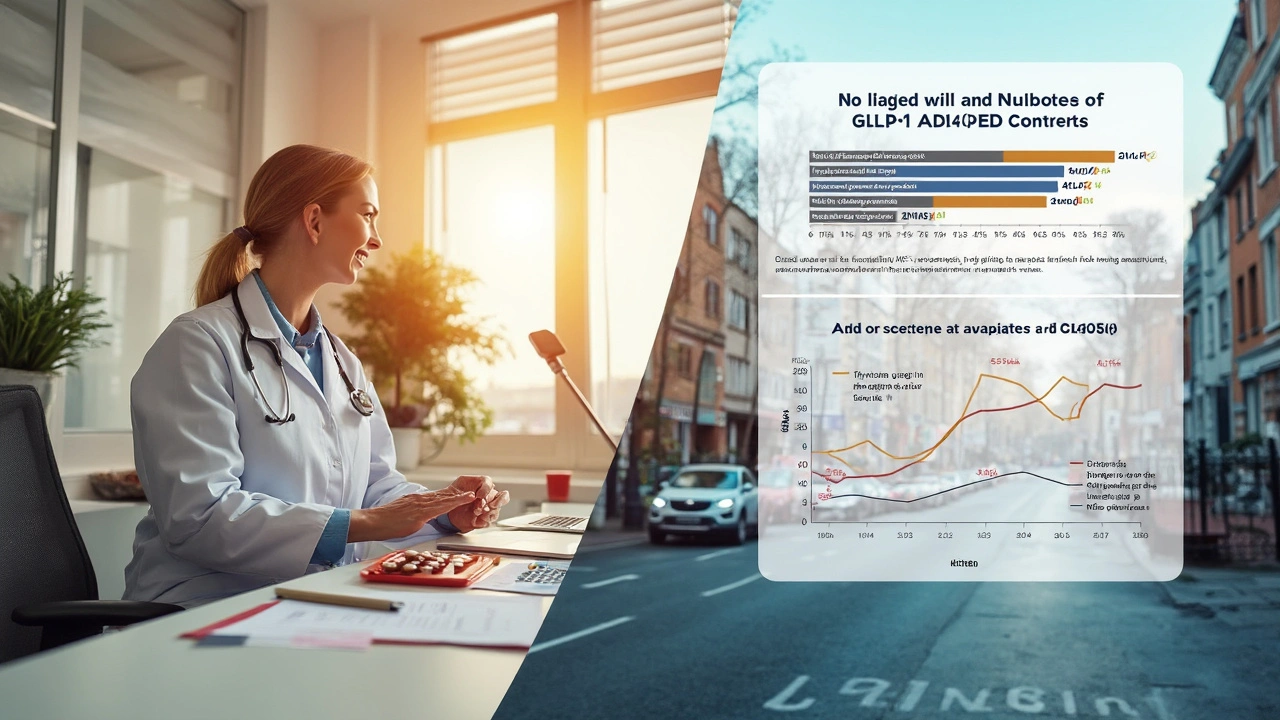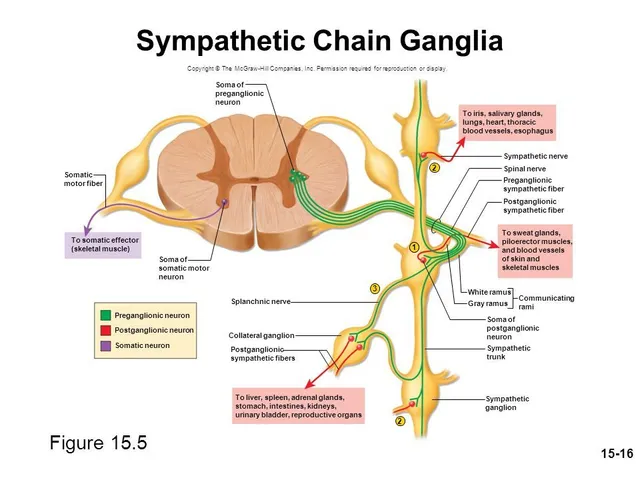Breaking Down the Basics: What Are GLP-1 Agonists and Metformin?
Anyone dealing with type 2 diabetes quickly bumps up against the question: which medication works best? Metformin has been around for decades, sort of the old reliable. It’s almost everyone’s starting point, thanks to its proven ability to lower blood sugar by reducing glucose production in the liver and improving insulin sensitivity. You’ve probably heard about metformin—even people without diabetes talk about it for off-label uses like weight loss.
GLP-1 agonists, with names like semaglutide, liraglutide, and dulaglutide, belong to a much newer family. They mimic a hormone (GLP-1) in your body that helps lower blood sugar after eating, makes you feel full, and slows how fast your stomach empties. Originally, these were injectables, but pills are finally hitting shelves too. The way they work—hitting multiple pathways—makes them stand out from most older diabetes drugs.
One key thing to know: metformin is almost always a pill, while GLP-1 agonists are still mostly shots, usually once weekly or daily. That difference alone puts some people off. But there’s no denying the buzz around GLP-1 drugs; they’re getting headlines for helping patients lose substantial weight and for potentially protecting the heart and kidneys as well as controlling diabetes.
So what happens when we compare them directly? Start with the big question—how well do they actually lower blood sugar?
Efficacy Showdown: Which Controls Blood Sugar Better?
Here’s the thing: metformin works really well for the majority of people right out of the gate. In clinical trials, it typically drops HbA1c levels—the number your doctor cares about most—by around 1-1.5%. For many Australians diagnosed today, that’s enough to hit the immediate target.
But GLP-1 agonists usually score even higher in studies. Randomised trials, like the landmark SUSTAIN-7 and AWARD-6, found drugs such as semaglutide and dulaglutide cut HbA1c by as much as 1-2%. That edge seems small on paper, but if your blood sugar is stubborn, it can be a game changer. People who take GLP-1 agonists also tend to shed more weight—a big bonus given how particularly stubborn weight loss is with diabetes. In one real-world study from 2023, semaglutide users lost on average 5-8 kg more than those on metformin alone.
A key fact: almost every international guideline still says start with metformin, unless you have heart or kidney problems, or extreme obesity. But more specialists are pushing for GLP-1 agonists sooner rather than later, because of those weight and heart benefits. After all, the majority of type 2 diabetes patients eventually need two or more drugs. So why not address the broader picture sooner?
"The latest evidence shows GLP-1 agonists not only lower blood sugar more than metformin alone, but also help achieve meaningful weight loss and reduce major cardiovascular events,” says Dr. Amanda Thornton, endocrinologist at the Royal Melbourne Hospital.
There’s more nuance here, too. Metformin is less likely than a GLP-1 to cause low blood sugar, and it works at a lower cost. GLP-1s, however, are showing up as the clear winners for people at risk of heart attack or stroke. Some, like semaglutide, are even approved to help with weight loss for people without diabetes.

Side Effects Face-Off: What Are the Downsides?
When you start comparing medications, side effects can make or break the right choice. Metformin’s big drawback is digestive upset: think nausea, diarrhoea, and sometimes a metallic taste. For most, this fades in a few weeks—especially if you take it with food or choose the extended-release version.
GLP-1 agonists have their own brand of squeamishness. About half of people experience some sort of stomach trouble when they first start: queasiness, vomiting, and sometimes diarrhoea or constipation. The nausea is famous, but often gets better after a month. Still, for some, it’s too much—even with careful ‘step-up’ dosing. There are rare but important risks, too: cases of pancreatitis have happened, and people with certain family histories (like thyroid cancer) should be extra cautious.
What about longer-term safety? Metformin, after all these years, is considered incredibly safe except for people with severe kidney problems. But a few people on metformin can develop vitamin B12 deficiency, so it’s something to watch for on blood tests every year or two.
Compare this to GLP-1 agonists, which are so new we’re still gathering all the long-term data. The diabetes community is excited by evidence that these drugs can help prevent heart attacks, kidney troubles, and strokes—especially in people with existing cardiovascular issues. Still, real-world experience is less than a decade old, which means some safety questions linger. Balancing the impressive upsides against uncommon but real risks is part of every decision.
Worried about weight gain? Metformin is usually weight-neutral; it won’t help you lose much, but you shouldn’t gain either. GLP-1s, on the other hand, consistently trigger weight loss, sometimes significant, even in people who’d previously struggled with the scales for years.
If you’re digging into these side effects to help guide your next prescription, you might also want to see an up-to-date guide on alternatives to metformin for diabetes, since there’s more than just the old blue pill and the new injectables on offer.
Cracking the Cost: Affordability, Rebates, and Accessibility
This is where people in real life hit speed bumps. Metformin is famously cheap—some scripts fill for only a few dollars with a concession card under the Australian PBS. Even without subsidies, it’s affordable here and across the globe.
GLP-1 agonists, unfortunately, are pricey. As of 2025 in Australia, standard PBS rebates only cover these drugs for certain subsets of patients, usually those who’ve failed on other therapies or have established cardiovascular disease. Out of pocket, they can run from $120 to $150 per month (or more), which stings even for well-insured folks. That’s a big ask when diabetes treatment is for life.
| Medication | Typical Monthly Cost (AUD) | PBS Subsidy Available? |
|---|---|---|
| Metformin | $5 - $20 | Yes, widely |
| Liraglutide | $130 - $160 | Limited |
| Semaglutide | $125 - $150 | Limited |
You’ve also got to factor in that GLP-1 agonists might not be available at all in rural or regional pharmacies, and there’s occasionally a supply crunch—especially when social media drives demand. If you’re traveling, metformin takes up no luggage space and is temperature stable, while GLP-1s travel in coolers with ice bricks unless you have the pill form, which only one brand currently does with broad distribution.
Tip: Anyone struggling to afford new diabetes treatments should talk to their GP or endocrinologist, as patients in certain risk groups may become eligible for subsidised GLP-1 therapy after demonstrating need, especially if other options have failed or side effects become intolerable. Don’t assume paying full price is the only way.

Choosing the Right Drug: Real-World Examples and Decision Tips
This isn’t an abstract debate—it plays out in clinics every day. Take Jenny, a 58-year-old with newly-diagnosed type 2 diabetes and a family history of heart disease. Her GP started her on metformin (easy, cheap, worked quite well), but weight loss was tough, and her cholesterol stayed stubbornly high. A switch to semaglutide helped with both: better blood sugar AND 7 kilos gone in six months, but it involved out-of-pocket expenses and monthly scripts at the major pharmacy downtown.
Then there’s Glenn, a tradie with a physically demanding job in the heat. He tried GLP-1, but the nausea made it impossible to keep working. Going back to metformin made life much smoother. For some, convenience is king—and swallowing a small, stable pill before tea wins out over needles and unpredictable tummy upsets.
When picking a first-line therapy, doctors usually ask:
- How far off are you from your target HbA1c?
- Are you at high risk of heart disease, or already have it?
- How important is weight loss for your physical or emotional health?
- What are you able and willing to pay each month, considering lifetime use?
- Would you rather avoid injections if possible, or are you open to them for a better shot at weight loss and protection against complications?
There is no universal right or wrong here. Some people love the appetite suppression of GLP-1 agonists and are happy to trade up for cost and weekly injections; others don’t want the hassle or hit to their pharmacy bill. Both drugs can be combined if single therapy doesn’t get blood sugars to target—metformin plus a GLP-1 is actually a really common combo now in specialist clinics around Australia.
Just don’t get discouraged if you need to try more than one option. Modern diabetes management is all about personalization. Keep up regular check-ins with your care team, and check for the latest guidelines. In 2024, the American Diabetes Association pointed out how quickly the landscape is shifting: “Optimal diabetes therapy increasingly means tailoring medications to individual goals, side-effect tolerances, and wallet size,” said their recent Standards of Care report.
Curiosity pays off as well—medication marketing changes month by month, and what’s too expensive or hard to find today could become mainstream by 2026 or later. Stay open to new studies and updated recommendations so you’re not getting stuck with yesterday’s options.






Amanda Anderson
July 18, 2025 AT 14:35Wow, this post really digs into the nitty-gritty, doesn’t it? I feel like so many people just hear ‘‘metformin’’ and think they’ve got their whole diabetes treatment figured out. But GLP-1 agonists seem like a serious contender from the way this article breaks things down — especially with the side effects and cost perspectives.
Honestly, for me, it’s all about balance. Yes, the effectiveness is crucial, but who wants to struggle with side effects or crazy medical bills? I’m curious about the ‘‘real-world experiences’’ part the author mentioned. Does it mean that some folks actually prefer GLP-1 agonists despite higher costs? I’d love to see more stories or data about patient satisfaction or quality of life.
Also, the mention of expert opinions gives me hope that this isn’t just $$ talking or pharma hype. Hmm, I wonder how accessible GLP-1 agonists are globally compared to metformin?
In all, a neat comparison that dishes out some much-needed clarity!
Tara Timlin
July 20, 2025 AT 08:15Hey all, just wanted to jump in because I’ve been working closely with diabetes patients for a few years now. The choice between GLP-1 agonists and metformin is rarely straightforward. From clinical view, metformin remains the frontline, but GLP-1 agonists show remarkable promise for weight management and cardiovascular benefits, which metformin alone doesn't provide.
Side effects? They really depend on the patient. GLP-1 agonists often cause nausea initially, but it often subsides. Metformin, while generally tolerable, can cause digestive issues that some find intolerable in the long run.
Cost is a huge barrier, especially in countries with less healthcare coverage. GLP-1 agonists can be pricey due to being newer, but the long-term benefits might justify the investment for certain patients.
One size definitely doesn’t fit all, so it’s important to consult healthcare providers who understand an individual’s complete medical profile. Happy to answer any specific questions!
rachel mamuad
July 21, 2025 AT 14:48lol I've gotta say, reading bout these meds can get so confusin sometimes, especially when they use fancy terms and data stats. I just wanna know which one saves more lives or helps me feel less crappy, ya know?
I mean, side effects are the worst. I took metformin once and I had stomach probs for days, kinda made me wanna ditch all meds. But GLP-1 agonists sound kinda scary too with all that nausea business.
Also, cost is a big deal coz most of us can't just spend tons on meds every month. If the new drug costs triple but barely makes a difference, then what's the point?
Would also love a simple breakdown on how these meds affect weight because I heard some help you lose a bit which is cool.
Robert Jackson
July 22, 2025 AT 21:22Frankly, I struggle to understand why people keep singing the praises of GLP-1 agonists when metformin has been the tried and tested choice for decades. The clinical data, if scrutinised properly, generally supports metformin’s efficacy as the frontline medication.
Cost comparisons aren’t some trivial matter either. The NHS in the UK certainly isn’t shelling out on GLP-1 agonists lightly, and for good reason. The cost to benefit ratio must be exceptional to justify widespread use.
Moreover, side effects are often exaggerated in anecdotal reports, while the core benefits of metformin continue to speak for themselves. I’d caution against embracing newer, more expensive drugs without substantial evidence.
Has anyone considered the implications of pushing these high-priced meds on public health systems under financial strain?
Maricia Harris
July 23, 2025 AT 22:22Honestly, all these medications just make me roll my eyes sometimes. Everyone's always hyped about the newest stuff, but is it curin anything or just patchin up symptoms?
I feel like the side effects of GLP-1 agonists can be brutal for some people, especially with nausea and whatnot. Like, is it worth it to feel sick just to maybe lose some weight or control blood sugar?
And cost? Ugh, don't even get me started. If these meds don't give you a clear win, why bother? Metformin’s cheap and somewhat reliable. I say stick to basics before jumping to fancy options. All this drama over meds makes life more stressful.
Patrick Bread
July 24, 2025 AT 15:02Oh, brilliant. Another ‘‘new miracle drug’’ that’s supposed to blow metformin out of the water. Because yeah, metformin totally sucks, right? Except it’s cheap, effective, and backed by decades of clinical use. GLP-1 agonists? Yeah, they’re ‘‘promising’’ but cost an arm and a leg.
And the side effects? Like nausea is just a minor nuisance? Some people can’t handle the new stuff at all. It’s funny how we overlook these things in favor of novelty.
Look, for anyone chasing effectiveness and affordability, metformin still reigns supreme. The ‘‘real-world experiences’’ usually boil down to hype anyhow.
Who’s surprised GLP-1 agonists are being pushed? Pharma’s gotta make money, no free rides here.
Fionnuala O'Connor
July 31, 2025 AT 22:02Hey folks, I’m here to offer a different angle. I’ve coached several clients who initially dreaded starting metformin due to side effects but acclimated over time. Others found GLP-1 agonists handy because they provided additional benefits like weight management and appetite control.
From a coaching standpoint, medication choice is really about personal needs and lifestyle. Some clients can afford GLP-1 agonists and value the extra benefits, while others prioritize cost and simplicity.
The post does a great job by factoring in both clinical evidence and real-world challenges. I encourage people to have open discussions with their healthcare providers about these trade-offs.
Fiona Doherty
August 2, 2025 AT 04:35Honestly, I feel the post’s heart in trying to be balanced, but it's a bit naive to act like these drugs are equally accessible options for most people. Most of us are stuck with what insurance covers or what’s in the local formulary.
Side effects from GLP-1 agonists can be a total deal breaker for some, and frankly, it’s not just ‘initial nausea’. Sometimes it messes with your day-to-day to a point where you basically dread taking it.
People also forget that weight loss, while sweet, isn’t the only measure of what matters for diabetes management.
So yeah, the post is helpful but a bit too optimistic about practical realities, imo.
Patrick Nguyen
August 3, 2025 AT 13:55It is important to objectively weigh the benefits and drawbacks of both medications. Metformin’s longstanding use makes its profile well-documented and understood. GLP-1 agonists, while newer, offer additional metabolic advantages but with less widespread availability and higher costs.
Regarding side effects, it is crucial for patients to receive proper guidance to manage initial adverse reactions. This can mitigate discontinuation rates and improve outcomes.
Cost considerations are not trivial. Yet, the potential reduction in other health resource utilizations by effectively managing comorbidities may justify higher upfront costs for newer agents.
In summary, tailored treatment approaches guided by clinical evidence and patient circumstances remain paramount.
Neil Greer
August 7, 2025 AT 06:48I appreciate the range of opinions here. Just to add, while metformin remains foundational, I think it’s exciting how GLP-1 agonists broaden options, especially when patients struggle with standard meds or have complex needs.
I’ve seen patients respond positively to added weight benefits and cardiovascular protections these drugs offer. However, cost and access remain huge issues, especially outside big cities and developed countries.
Would be great for future research to focus more on long-term real-world effectiveness and cost-benefit in diverse populations.
Thanks for all the thoughtful comments so far!
Christopher MORRISSEY
August 17, 2025 AT 14:35As we delve into the intricacies of diabetes pharmacotherapy, the dichotomy between GLP-1 agonists and metformin illustrates the evolving landscape of treatment paradigms. Historically, metformin has been the stalwart, renowned for its efficacy and safety profile. Yet, the advent of GLP-1 receptor agonists introduces an intriguing prospect in optimizing glycemic control alongside ancillary benefits.
From an academic standpoint, comprehensive cost-effectiveness analyses remain indispensable to inform health policy decisions, especially in resource-limited settings. Additionally, patient-centered outcomes must not be overshadowed by pure clinical metrics.
I opine that future discourse should integrate multidisciplinary perspectives encompassing endocrinology, pharmacoeconomics, and patient advocacy to holistically navigate these therapeutic choices.